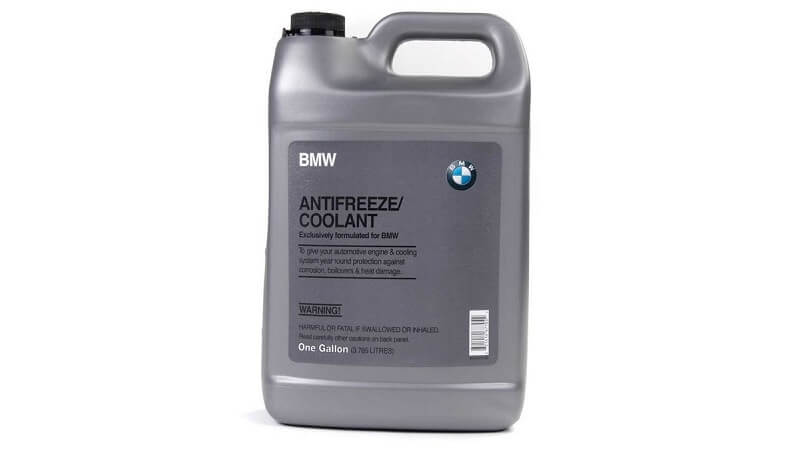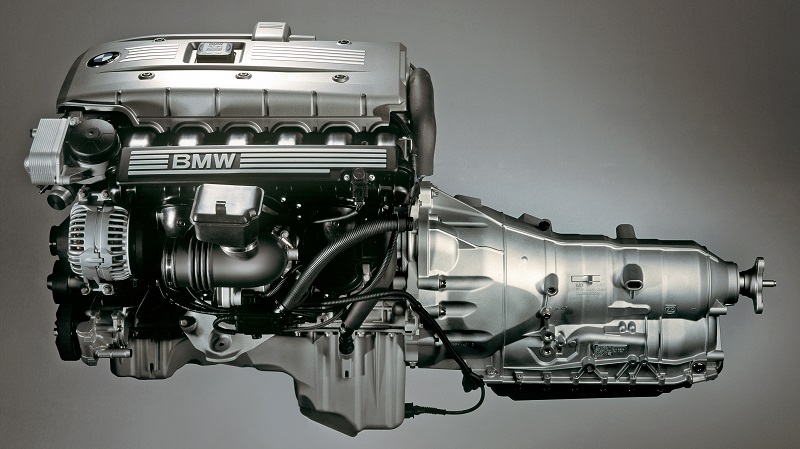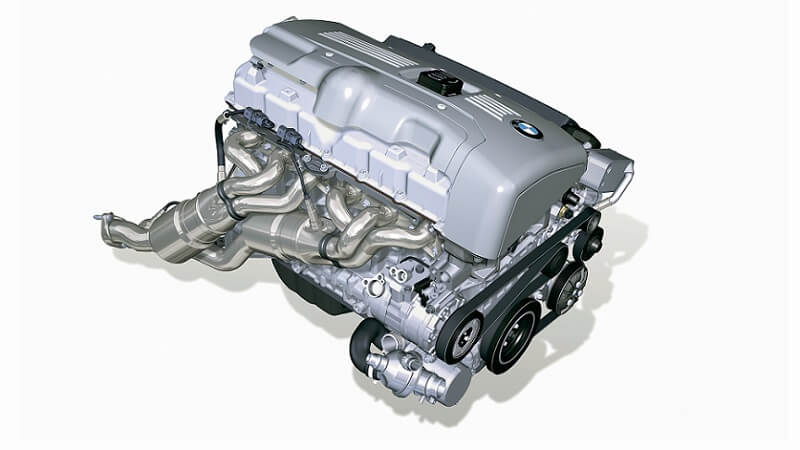The BMW E90 3-Series is the fifth generation of arguably the most recognizable product from the manufacturer’s portfolio. Introduced in 2005, the E90 replaced the highly successful E46 3-Series and brought a host of updates. The E46 is still considered by many as one of the finest drivers’ cars that BMW has made; however, even the youngest example of one is at least 15 years old. As a result, the newer E90 has gained a lot of traction in the used car market.
Considering its increase in demand, we’ve put together a buyers’ guide to help you decide on which version to get and what to look out for. Here’s everything you need to know about the BMW E90 3-Series.

BMW E90 – A New Direction
The E90 3-Series was a significant step in a new direction for BMW. While the Bimmer community didn’t immediately accept it as a worthy replacement to the E46, it was a better car in many regards. The E90 was longer, wider, and taller compared to its predecessor. This translated to more room for passengers and luggage — a common gripe with older 3-Series cars.
This generation of cars also represented the last of the naturally-aspirated 3-Series — the 335i was the only one from the E9x era that featured forced induction and was the first 3-Series to feature a turbocharger. All the cars in the F30 generation that followed were turbocharged.
BMW also introduced now-common features like run-flat tires and the iDrive infotainment system with the E90.
The E90 Chassis Through The Years
The BMW E90 was in production from 2005 to 2013. Over its eight-year run, it would go on to become BMW’s highest-selling model and collect multiple accolades, including the prestigious award of the “World Car of the Year,” making it the first BMW to do so.
While it is collectively referred to as the E90 or E9x series, the fifth generation of the 3-Series comprised multiple body types, each with a different model name. The sedans were called the E90, the wagons or ‘Touring’ models were represented by E91, the coupes were E92, and the convertibles were E93.
Body Types
Much like many other BMW products, the E90 3-series was available in a variety of body types.
Sedan (E90)
The E90 sedan was the first of the fifth-gen 3-Series to go on sale. It made its debut in the U.S. market in 2005 as a 2006 model, with the 325i and 330i. Over the years, BMW added new variants to the E90 line before replacing it with the F30 3-Series for 2012.
Touring (E91)

The E91 estate models were referred to as ‘Touring’ cars in the European market, while they acquired the ‘Sports Wagon’ name in the North American market. The E91 models were available with rear-wheel drive and xDrive all-wheel-drive and were characterized by an optional panoramic sunroof that extended to the car’s rear.
The U.S. market received only select E91 models — the 325xi until 2007, and then the 328i and 328xi from 2007 onwards.
Coupé (E92)

The two-door E92 was unveiled in 2006 as a 2007 model. Unlike previous generations of the 3-Series, where the coupe was simply a derivative of the sedan sans two doors, the E92 featured its own unique design. It featured narrower headlights, more rounded kidney grills, and broader tail lamps, among other different design cues.
This was also the last generation to include the coupé (and the E93 convertible) as a part of the 3 Series range. The two have been rebranded as the 4 Series for generations that have followed. The E92 and the E93 were sold until 2013, after which they were replaced by the 4-Series F32 and F33, respectively.
Cabriolet (E93)

Until the E93 came along, BMW convertibles all featured a retractable cloth roof — this was the first to use a hardtop. The convertible was also notably more advanced than its counterpart from the E46 era. BMW took many steps in improving functionally and safety with this model, and it acted as a benchmark for cabriolets at the time.
The E90, E92, and E93 were also available as M3 models.
Available Models in North America
Internationally, the E90 3-Series was powered by multiple engines over its time. However, only a select few made their way to the North American market. These include the BMW N52, N54, N55, and the often forgotten M57 diesel engine. The M57 powered the BMW 335d, the manufacturer’s last inline-six diesel sedan to be sold here. Here’s a look at the engines that made their way to the U.S.:
- 2006 2.5L N52B25 in 325i, producing 215 hp at 6,500 rpm and 180 lb-ft of torque at 2,750–4,250 rpm
- 2006 3.0L N52B30 in 335i, producing 255 hp at 6,600 rpm and 220 lb-ft of torque at 2,500–4,000 rpm
- 2007-2013 3.0L N52B30 in 328i, producing 231 hp at 6,500 rpm and 200 lb-ft of torque at 2,750 rpm
- 2007-2010 3.0L N54B30 in 335i, producing 302 hp at 5,800 rpm and 300 lb-ft of torque at 1,300–5,000 rpm
- 2011-2013 3.0L N55B30 in 335i, producing 302 hp at 5,800 rpm and 300 lb-ft of torque at 1,200–5,000 rpm
- 2009-2011 3.0L M57D30 in 335d, producing 282 hp at 4,400 rpm and 430 lb-ft of torque at 1,750–2,250 rpm
Only a handful of E90-gen models made their way to the American market — all of them powered by a straight-six. Interestingly, there were also inline-four iterations of the E90 sold in Europe and specific other markets.
The 2007 Facelift: Pre-LCI vs. LCI
For 2008, BMW made some rather significant changes to the E9x line. The cars that came after were referred to as the LCI models. The updated vehicles featured a fresh design with changes to the bumpers, mirrors, headlights, taillights, boot lid, bonnet, and kidney grilles.
In the U.S., you could get your hands on the 325i or 330i before the LCI. These pre-LCI cars were also available in a ‘xi’ all-wheel-drive spec. Post-2007, these cars were replaced by the 328i and 335i models.
For the 2010 model year, the 335i also received an engine update — a single twin-scroll turbocharged N55 engine replaced the twin-turbo N54, thus increasing the overall reliability of this generation of BMW 3-series. .
Optional Package

Like with all BMWs, customers of the E90 3-Series had the option of speccing their car with several optional features. These included creature comfort add-ons or performance-oriented upgrades.
Premium Package
The Premium Package differs with the model year but generally comprises upmarket, adjustable seats with better support, automatic mirrors, BMW Assist with Bluetooth compatibility, and more.
Cold Weather Package
The Cold Weather Package included a ski bag in the rear seat, headlight washers, and heated front seats. Many owners complained that a heated steering wheel should have also been a part of this.
Sports Package
A three-prong steering wheel with paddle shifters, sportier seats, stiffer suspension, larger 18-inch wheels, and a higher-top speed limiter were part of this package. These updates, in addition to minor cosmetic changes in the form of different bumpers, made the ‘M Sport’ package.
Technology Package
The Technology Package added iDrive and navigation, keyless entry, and M Drive for different driving modes.
BMW E90 M3

As we mentioned above, BMW made the E90 (sedan), E92 (coupe), and E93 (convertible) available in M3 iterations. This was the only generation of the M3 to be powered by a V8 engine. The 4.0L BMW S65 produced a healthy 414 bhp at an impressively high 8,300 rpm.
This M3 was initially available with a 6-speed manual gearbox but was soon made available with a dual-clutch transmission – the 7-speed Getrag’ M-DCT’ was a first for any BMW. Official 0-62 mph times stood at 4.6 seconds, 4.8 seconds, and 5.1 seconds for the E90, E92, and E93, respectively.
The E90 M3 was also available in a Competition Package (also referred to as the ZCP) that featured a lower ride height, electronic damping, bigger wheels, and an ‘M’ mode (on/off ESP.)
This car also marked the return of the BMW to the DTM after nearly 20 years. Like the standard car, the E92 M3 was also the last two-door coupe to wear the M3 badge. The two-door versions that followed wore the M4 badge, with the M3 only available as a sedan. Consequently, this was also the last M3 to participate in motorsport.
Which Engine to Get?

Photo credit: autowp.ru
If you’re looking for something that’s a great driver’s car while also being easy to maintain, we recommend opting for a used N52-powered 325i, 328i, or 330i. The N52 is a lighter engine and played a notable role in the car’s handling dynamics. Additionally, the absence of a forced-induction system — tech that was still in nascent stages for the manufacturer back then — meant a less problematic engine.
However, if you wanted more performance, the N54 powered 335i was your best bet. Keep in mind that these cars are somewhat affordable in the used car market but will likely throw a few issues your way after you’ve purchased them. Expect to run into problems in the first year or two of ownership.
The N55 powered 335i is also a great bet as BMW attempted to resolve issues that the N54 had with the new engine. Again, it will cost you more to run and repair than the naturally-aspirated N52, but it’s a much more fun engine to own and drive.
Lastly, we also suggest that you only look at post-LCI cars and one that has a manual gearbox — the automatic transmission from back then is nowhere near as responsive as the ones we get to experience today.
Is BMW E90 Reliable?
Overall, the BMW E90 is a reliable car. The models powered by the N52 engine will throw up very few issues — the N52 is one of the manufacturer’s most robust engines and has stood the test of time rather gracefully. On the other hand, the newer turbocharged N54 and N55 engines were comparatively problematic. We’ve listed some of the most common problems on an E90, so you can keep an eye out for them if you’re looking at buying one.
Pre-Purchase Inspection — Known Issues

Photo credit: autowp.ru
Although a fairly rugged platform altogether, the E90 series cars have shown their weaknesses over the years. Fortunately, the list of common issues isn’t that long, but it’s a list you should pay close attention to if you’re in the market for one of these. Let’s start with engine issues.
VANOS Solenoid Failure
The N52 features BMW’s double VANOS system, or variable valve timing for the intake and exhaust valves. The technology comprises solenoids that control oil flow to the actuators. These actuators move the camshaft sprocket assembly that opens and closes the valves.
On the N52 engine, these solenoids were known to sometimes fail. If this does happen, your engine will still run, albeit with a noticeable drop in power. It could send your car into limp mode and show other symptoms, like a rough idle.
Thankfully, the solenoids are an inexpensive part to fix. They tend to last about 70,000-75,000 miles, but we recommended replacing them regularly to avoid any unexpected drops in engine performance.
High-Pressure Fuel Pump Failure (HPFP)
One of the most common issues with the N54 and N55 engines is concerning the high-pressure fuel pump. The HPFP supplies fuel to the engine, and, unfortunately, multiple owners have reported that it failed on their cars.
If an N54 or N55-powered car has a long crank time or a significant drop in power, it could mean that the fuel pump is faulty. Additionally, the check engine light on the dash will illuminate as well. Sadly, there’s no sure-shot way to see this coming, and you can’t really do much to prevent it.
Running your engine hard may increase the probability of a fuel pump failure, but feathering it will not help your case either.
When BMW noticed that this was a repeating occurrence, it added a 10-year/120,000-mile warranty on the part. Since a majority of these engines have already made it past the 10-year mark, it’s likely that most of them have had the fuel pump replaced at some point.
Turbo Failure and Wastegate Rattle

Since turbochargers on mass production levels were relatively new for the manufacturer, the unit on the N54 wasn’t the smoothest in terms of reliability. One of the more common ones was with the turbo wastegates.
The wastegate on a turbocharger controls the flow of exhaust gasses from the turbochargers and regulates the turbo’s spool speed. Essentially, it controls boost pressure. Wastegate rattle is an issue that’s caused when its actuator rod is worn out. If this isn’t sorted, it will blow your turbo, and that’s not an issue you want to deal with. A new one can cost you a few thousand dollars, and having it replaced is also a labor-intensive job, so there are those costs to factor in.
Keep an eye for low boost engine codes, a significant loss in power, or a rattling noise from the engine.
Valve Cover Gasket Oil Leak
A leaking valve cover gasket is an issue seen on multiple BMW engines from the era. The rubber gasket is subject to high temperatures that cause it to deteriorate over time. Eventually, it may crack and result in an oil leak.
The valve cover gasket sits underneath the valve cover, which is a plastic body that’s also subject to high temperatures. This is another part that’s likely to crack over time. Since it’s hard to access, you should consider having it changed whenever you’re changing the gasket.
Hydraulic Valve Lifters
The N52 features hydraulically adjusted valve lifters, and they tend to wear out on engines with higher mileage. Many long-term owners complain about a ‘ticking’ noise coming from the engine, and more often than not, worn-out valve lifters are the problem. It’s most prevalent on cold starts and before the engine warms up.
A faulty valve lifter doesn’t drastically affect the engine’s performance, but it can turn into an annoying rattle if left unattended. They tend to ‘tick’ when there isn’t enough oil reaching them to function correctly.
This is the result of a poorly designed cylinder head and lifters and is most common on pre-LCI cars. With the LCI models, BMW made some changes to the lifters and the cylinder head, but some reports of post-2009 cars have faced this issue.
Water Pump Failure
Unlike older engines that featured a mechanical water pump, the N52 used an electrical unit. While this brought many advantages, like the ability for the ECU to adjust flow rate depending on how you were driving, it did have its share of problems. For instance, poor build quality resulted in numerous reports of them cracking as early as after 40,000 miles.
If your water pump fails, your engine will likely overheat, and you might see steam coming out of the radiator. The stock water pump features a plastic impeller; replacing it with a metal one should improve longevity.
Suspension, Brakes, Interior, and Exterior
The E90 was a well-built car, but considering that most of them are over a decade old, there are some things beyond the engine that you should look out for. For starters, there are the run-flat tires that we mentioned earlier; while they’re a nice feature to have in case of a puncture, these tires usually had a narrower sidewall and would sometimes result in cracked rims. They also caused a louder and firmer ride.
You should also check the condition of the suspension sway bar end links and the ABS pump, as these have been reported to fail. The LCI cars also featured more electronics like power windows and seats or climate control as standard, and a quick check to see if these are in running order will save you from potential expenses down the line.
The exterior of the E90 is of high quality, and rust was never a commonly reported problem. However, check the wheel wells and door trims for any signs of corrosion.
Is the E90 Worth Buying in 2022?
The short answer is yes; the E90 is worth buying even now. In fact, in some cases, it may be of better value than its more sought-after predecessor, the E46. There’s an E90 out there for any type of driver and in multiple body styles. It’s no surprise that it went on to become the brand’s most popular model and “World Car of the Year” in 2006 — it remains the only BMW to have done so.
The E90 series was also feature-packed and performed exceptionally well in Euro NCAP crash tests, making it safer than many predecessors.
The right E9x for you comes down to what you want from the engine and how much you’re willing to spend on keeping it running. While the 325i, 328i, and 330i are excellent choices that combine practicality and driving pleasure, there’s no denying the fact that the 335i is the best of the lot. Yes, it’s a more problematic machine to own, but it set the directional foundation for the 3-Series cars that followed.




